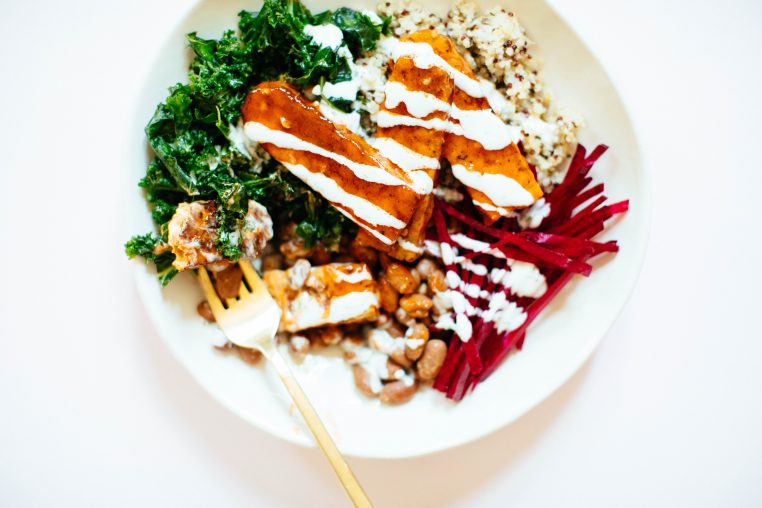Why is it so hard to break old habits? Why is motivation never enough? We’re talking all about the process of behavior change.
Behavior Change
You know all the facts; you’ve read all about healthy fats, you know how to find added sugar on a nutrition label and know all the ins and outs surrounding processed foods. Your vitamin regimen is on point and your fitness schedule is always planned out for the week ahead.
Yet, it’s 9:00 pm on a Wednesday night, you skipped your spin class, neglected your perfectly prepped lunch at work and concluded the day by polishing of the pint of ice cream you were saving for your best friend’s birthday.
Has this ever been you?
Before you assume that I’m shaming this activity, don’t get me wrong! We all need this sometimes. I as well as many others absolutely skip my spin class and enjoy some ice cream every now and then. It’s good for the soul, as I like to say.
What I’m talking about here are the nights when it’s not what we need, when it’s not what we truly want to be doing. When we’re instead reverting back to old habits because they’re comforting and familiar. When we can’t quite seem to get our new routines to stick, our new habits to form.
What I’m talking about here is behavior change.
What is Behavior Change?
In it’s simplest form, behavior change is the process of breaking old habits in order to successfully form new ones. It’s the art of putting your knowledge into practice and physically changing a preexisting behavior.
A successful behavior change must also be lasting. Once the new behavior is achieved, maintaining it is the key to success.
Why is Behavior Change So Hard?
There’s a reason why the majority of New Year’s resolutions have failed by February, about 80% to be exact (1). In order for our New Year’s resolutions to stick, we need to master the art of behavior change.
Unfortunately, mastering the art of behavior change isn’t quite as easy as it sounds. While research is still being conducted to further understand the mechanisms behind changing behavior, there are a few theories with substantial evidence we can use to begin to understand behavior change.
The difficulty of a particular behavior change can be gauged based on the type of habit we’re trying to break, the way in which we perceive the difficulty of the change, the perceived benefit of the behavior change and lastly the environmental factors we’re surrounded with while making the change.
So let’s break these factors down.
Habit And Behavior Change
Generally speaking, there are two types of habits we can form. The first allows us to partake in a plethora of activities without really having to think about them. We’re able to function on auto-pilot, if you will. These habits are generally a result of repetition. Your morning routine, the route you take to work, they’re all forms of repetition-based habits.
The second type of habit is a bit different, these habits are reward-based. By reward-based I mean pleasure driven. More specifically, activities that stimulate the release of dopamine can be considered reward-based habits. Think of binge eating or smoking, for example.
Pleasure driven habits are harder to break due to the involvement of dopamine. When we’re engaging in a behavior over and over again where dopamine is always present, the habit becomes stronger and stronger. Congruently, when we stop the behavior and therefore lose that presence of dopamine, we can crave the sensation associated with that behavior. (2)
So now that we know what kind of habits we’re dealing with, what barriers get in the way of us breaking those habits?
Perceived Long-Term Benefit And Behavior Change
When we’re presented with a situation that can lead to immediate satisfaction rather than long-term satisfaction, sometimes we can have a difficult time choosing long-term satisfaction.
For example, let’s say your goal is to decrease your cholesterol levels. After meeting with your PCP, they’ve recommended you decrease your current consumption of baked goods to help reduce your levels. You’ve previously made it a habit to have a baked good after dinner every night, therefore this is the habit we’re working on breaking.
So, it’s a Tuesday night and you’ve just finished up your dinner. You soon realize you have some chocolate cake leftover from last week.
Research has shown that when you ask yourself, “Is it a good idea for me to eat that cake right now because it tastes good? Or is it a better idea for me to say no and reap the greater reward of lower cholesterol levels later?”, we tend to have a difficult time valuing the long-term benefit over the immediate reward (3,4).
Scientifically speaking, this is often referred to as delay discounting. This occurs when we discount (or decrease) the value of the long-term reward and perceive the short term reward to be more valuable. Sometimes it’s harder for us to imagine the long-term benefits in the future as opposed to the immediate satisfaction we can feel just moments later.
Environmental Factors And Behavior Change
When we’ve participated in a certain activity for an extended period of time, environmental cues can start to trigger the behavior with or without us noticing it. From peer pressure to visual cues, our surroundings can have a large impact on our choices.
Research has shown that visually seeing something or being physically presented with something associated with the behavior change in question, can instigate a goal-incongruent decision (5). Essentially, a choice that does not coincide with our goals.
Let’s go back to our cholesterol example with the cake. Although we’ve decided to no longer eat baked goods after dinner every night in order to help lower our cholesterol levels, if there is chocolate cake right in front of us, we may not be able to stick to our intended choice.
This can also be applied to a social setting. For example, if you always eat that chocolate cake with your family, and your family has continued to have desert every night despite your decision to refrain from it, research has shown that pressure from another person can often lead to difficulty maintaining your decision (6).
Moral of the story, our surroundings greatly impact us! If a behavior change intervention is going to work, we need to keep this in mind.
Perceived Difficulty And Behavior Change
Have you ever heard the phrase, “you’re in your own head”? Well that’s exactly what we’re talking about here.
When we believe that an activity or a goal is too difficult to accomplish, we can set ourselves up for failure before we even start.
The scientific theory that explains this mechanism is called the Theory of Planned Behavior, more specifically Perceived Behavior Control. It suggests that when a person believes they have control over an action, they are more likely to actually participate in said action or behavior (7).
After leaving your PCP’s office having decided to kick your baked good habit, the whole way home you begin listing off all of the reasons why the goal will never be reached. “I’ve been doing this for years, no way I’ll be able to stop; my family always has cake I can’t say no; there’s no way I’ll be able to control myself if the cake is always in the kitchen.”
Does this sound like you?
By simply believing that the behavior change is going to be hard, we make it even harder on ourselves to accomplish.
Motivation Is Never Enough
Lastly, we have to touch on motivation as a factor. Motivation is sometimes portrayed as the “end all be all” for behavior change.
While it’s definitely a component, there’s a whole lot more to the story.
There are so many different reasons for why we decide to change a behavior. They’re often health and wellness related, such as opting for more health-conscious food choices or adding exercise to your weekly routine.
When we decide to make a behavior change, if you really think about it, motivation is step one. We need to be motivated enough to decide to change a behavior. Whether that motivation is stemming from wanting to decrease blood pressure levels or increase physical strength, motivation must be present.
The problem here is that instilling behavior change takes so much more than motivation. Yes, motivation is key, but we need to take it one step further. If we want to break those old habits, create new ones, and maintain them for an extended period of time, motivation just doesn’t cut it.
Motivation is the catalyst, what comes next will get you to the finish line.
How to Instill Behavior Change
Picture two individuals. Both are looking to increase mindfulness, so they both download a step-by-step guide for becoming more mindful. They each follow the guide to a T, yet only one of them successfully masters the art of mindfulness. Why?
More than anything else, we need to remember that everyone is different, everyone is unique. Regardless of what worked for a friend or family member, you need to think about you and your individual needs when looking to make a lifestyle change.
Regardless of how we look at it, breaking old habits is tricky business. When instilling a new behavior change, the difficulties listed above must be accounted for. From environmental factors to perceived difficulty and reward, they all play a part on the road to behavior change.
Determining which factors impact you most and how you can tackle them will be the key to your success.
Support And Accountability
Sometimes we need to ask for help, it’s as simple as that. Asking for help is something we should be proud of rather than ashamed of. It takes a lot for us to admit that we just can’t do it all on our own.
While this mentality applies to just about every aspect of our lives, it’s particularly important in terms of behavior change.
When looking at successful behavior change interventions, a key common denominator is accountability.
Research has shown that some of the most successful behavior change interventions required accountability from a health care practitioner in order to succeed (8).
If you’ve attempted to change a behavior, break a habit or form a new habit and just couldn’t seem to sustain it, asking for help may be the last step you need to take.
Help can come in all shapes in sizes, just make sure you choose a reliable source! If you’re looking for guidance for an exercise routine, seek out a credentialed personal trainer. If you’re looking to reach a health and wellness goal involving food and lifestyle, a dietitian is the perfect fit for you. Along with registered dietitians in your area, we also provide virtual wellness coaching right here at Nutrition Stripped.
Connect
What has your experience been with behavior change? Had you thought of it as a scientific process before? We would love to hear your thoughts on the subject! I’m sure someone else reading the article would as well. As always, you can connect with us outside of the website on Instagram via @nutritionstripped @nutritionstrippederica and #nutritionstripped #nswellnesscoaching.








